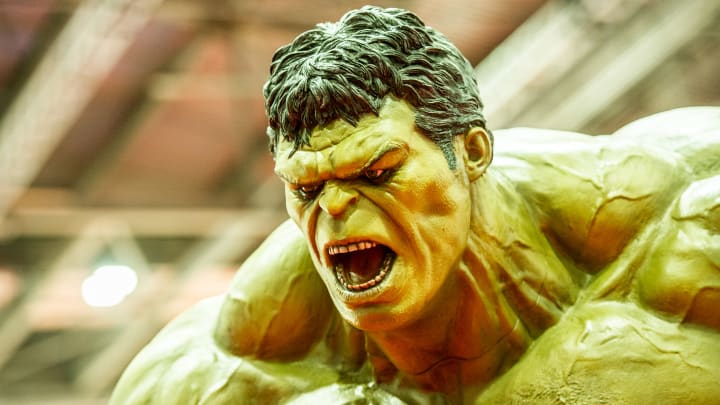The Hulk: Bruce Banner's Gamma-Powered Alter Ego

The Hulk, also known as Bruce Banner, is one of Marvel's most formidable and complex superheroes. Created by writer Stan Lee and artist Jack Kirby, the Hulk first appeared in "The Incredible Hulk" #1 in 1962. As a brilliant scientist transformed into a raging green behemoth by gamma radiation, Bruce Banner's struggle with anger, control, and the dual nature of his monstrous alter ego is a tale of inner turmoil, power, and the quest for acceptance.
Bruce Banner begins his story as a reserved and brilliant physicist working on gamma radiation experiments for the U.S. military. A laboratory accident exposes Banner to an intense dose of gamma radiation, triggering a transformation into the Hulk whenever he experiences extreme emotional stress, particularly anger. The Hulk, a massive and incredibly strong green-skinned creature, possesses limitless strength and near-invulnerability, making him a force to be reckoned with.
The transformation into the Hulk is marked by Banner's loss of control and the unleashing of his repressed emotions. As the Hulk, Banner's intellect diminishes, and his actions become driven by raw instinct and overwhelming rage. Despite his destructive tendencies, the Hulk's actions often inadvertently protect the innocent and confront powerful adversaries, earning him both fear and admiration.
The Hulk's physical appearance, characterized by his towering stature, green skin, and incredible muscle mass, symbolizes his overwhelming power and inner turmoil. His ability to leap great distances and withstand immense physical punishment makes him a formidable opponent in battle. The Hulk's alter ego, Bruce Banner, struggles with containing and understanding the Hulk's immense power while seeking a cure for his condition.
One of the Hulk's defining characteristics is his inner conflict and duality as both Bruce Banner and the Hulk. Bruce Banner's quest for control and understanding of his transformations leads him to explore scientific solutions and seek assistance from allies like Betty Ross and fellow Avengers. The Hulk's role as a misunderstood hero and reluctant protector highlights the complexities of his character and the challenges of living with a dual identity.
The Hulk's adventures see him facing formidable adversaries, including the military forces led by General Thunderbolt Ross, who view the Hulk as a threat to national security. His clashes with other superheroes, such as Thor, Wolverine, and Iron Man, reflect his unpredictable nature and his struggle to find acceptance and belonging in a world that fears and misunderstands him.
Mark Ruffalo's portrayal of Bruce Banner/The Hulk in the Marvel Cinematic Universe (MCU) brought depth and humanity to the character. Beginning with "The Avengers" (2012), directed by Joss Whedon, Ruffalo captured Banner's internal conflict and the transformative power of the Hulk. The character's appearances in subsequent MCU films, including "Avengers: Age of Ultron" (2015), "Thor: Ragnarok" (2017), and "Avengers: Endgame" (2019), explored Banner's journey of acceptance and integration with the Avengers.
"Thor: Ragnarok" showcased the Hulk's gladiatorial battles on the planet Sakaar and his evolving friendship with Thor, adding humor and camaraderie to the character's arc. "Avengers: Endgame" culminated in Banner's merging with the Hulk, resulting in the creation of "Smart Hulk," a blend of Banner's intellect and the Hulk's physical strength. This transformation symbolized Banner's acceptance of his dual nature and his role as a hero.
In conclusion, the Hulk's journey from a brilliant scientist to a gamma-powered behemoth is a saga of inner conflict, power, and the quest for acceptance. Through comics and films, Bruce Banner's adventures have captivated audiences, embodying themes of identity, control, and the consequences of unchecked power. As the Hulk, Bruce Banner remains a symbol of resilience, strength, and the ongoing battle between the mind and the monster within.